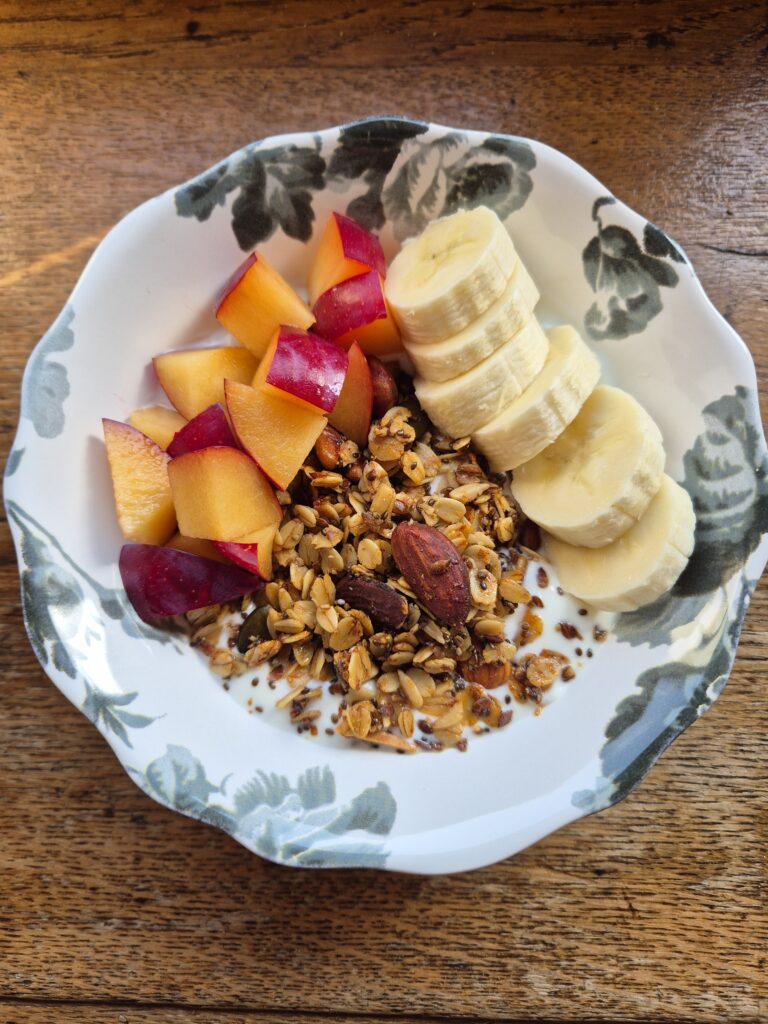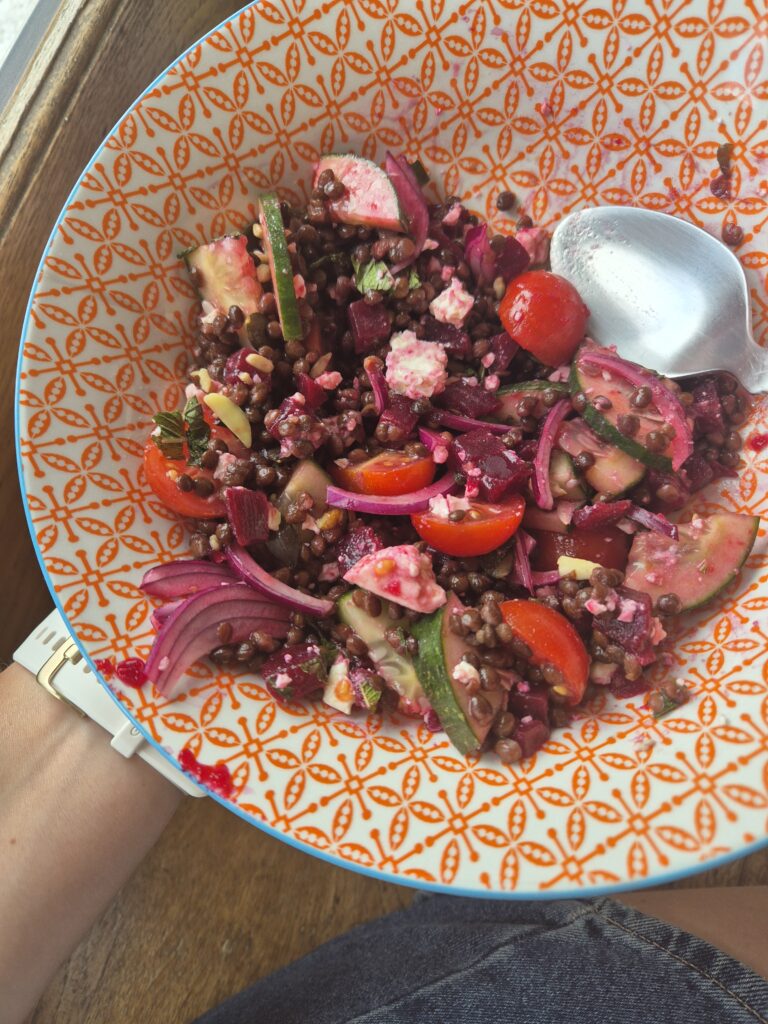Nutritional Needs of Breastfeeding Mothers
Nutritional Needs of Breastfeeding Mothers Written by nutrition student Millie Rose Introduction WHO and UNICEF recommend that children initiate breastfeeding within the first hour of birth and be exclusively breastfed for the first 6 months of life, meaning no other foods or liquids, including water. From the age of 6 months, children should begin eating safe and adequate complementary foods, whilst continuing to breastfeed for up to 2 years of age or beyond. Breastmilk provides all the energy and nutrients that an infant needs for the first few months of life. It is safe, clean and provides antibodies, which help to protect infants from common childhood illnesses (WHO, 2025) and growth factors, which allow your baby to grow and develop healthily (Ballard and Morrow, 2014). For breastfeeding month, it is time to recognise breastfeeding as a powerful foundation for long-term health, development, and equity. This blog will delve into the nutritional needs of breastfeeding mothers, how diet affects nutrients in breastmilk, breastfeeding myths, and a sample meal plan for breastfeeding mothers. Nutritional Needs of Breastfeeding Mothers What goes into your milk? As a breastfeeding mother, your nutritional status, supplements, and medication you take may affect the quality of your milk, as well as the volume you produce. This is why it is vital you must keep a nutritious diet that supports you and your baby. If you take any supplements or medication, you should consult a lactation consultant or doctor to check they are safe to breastfeed with. It is also important to note that you and your baby may not need supplements, as your diet is usually sufficient. Hydration The initial milk to come through is called colostrum, a thick, yellow liquid. It appears like this because it is highly concentrated with all the nutrients your baby will need (Cleveland Clinic, 2023). Infants should consume 150-200ml per kg of body weight per day until 6 months old (NHS, 2021). This means as the baby’s weight increases and the volume you are feeding to your baby increases, your hydration requirements will increase too. You may need to have an extra drink of water while you are breastfeeding. See Nutrition and Hydration Week Blog for some simple tips on how to increase your fluid intake. Nutrition While you are breastfeeding, you do not need to follow a specific diet, however it is recommended to eat a variety of foods to make up a healthy diet. Eating a wide variety of foods including carbohydrates, protein, fats, fibre, fruit and vegetables ensures diversity of nutrients, feeds your gut microbiome and gives you enough energy to sustain motherhood. Try to eat the rainbow, adding different vegetables, fruits, legumes (such as beans, chickpeas, lentils), grains (such as rice, wheat, oats, quinoa, rye), nuts, seeds, herbs, and spices to your meals (NHS, 2020) In the UK, it is difficult to get enough Vitamin D from your diet alone. If you are breastfeeding, it is advised you take a 10mcg Vitamin D supplement in the winter months; October to March when sun exposure is limited. Exclusively breastfed babies and babies who receive less than 500ml of formula per day are advised to take 8.5-10mcg vitamin D every day, until they are 1 years of age. Children over the age of 1 year and adults are advised to take 10mcg vitamin D daily (NHS, 2025). Iron – Breastmilk contains only a small amount of iron, so your baby will rely on stores passed through the placenta before birth. If there is a chance you were iron deficient during your pregnancy, which may mean your babies iron stores are low, you should consider taking an iron supplement while breastfeeding, as well as consulting a doctor to check your baby for an iron deficiency. Calcium – There is a higher need for calcium when breastfeeding. This is because of the demand for calcium in breast milk which supports the infants growth and development. A supplement is not usually necessary, but you may wish to consider adding more calcium into your diet (NHS, 2020). Include foods such as dairy, fish with bones such as sardines, tofu, green leafy vegetables such as broccoli or kale, nuts and seeds. Considerations while breastfeeding Allergens If any sensitivities are found in your baby, these should be eliminated from your diet, as there may be traces in your milk. However, if you do not notice any sensitivities, you should continue to include allergens in your diet, including cow’s milk, eggs, and nuts (NHS, 2020). Alcohol It is recommended to avoid drinking alcohol while you breastfeed your baby. However, if you do drink alcohol, it is recommended to avoid feeding your baby breastmilk for at least 2 hours and throw away milk produced during this time (NHS, 2022). Caffeine It is recommended that you do not exceed 1 caffeine drink or 300mg per day, while breastfeeding. This may include coffee, tea, fizzy drinks, energy drinks and chocolate (NHS, 2025). An alternative could include 150ml of fruit juice, decaffeinated drinks, or sparkling water. Myths Current advice is to include allergens in your diet unless you or your baby are allergic to them. There is not sufficient evidence to show eating allergens causes allergies in your baby (Lodge et al, 2015). Signs of a baby having an allergic reaction include eczema, hives, vomiting, diarrhoea, and respiratory issues. If your baby shows signs of a mild reaction, including rashes, remove the trigger, if known from your diet, and observe in case of worsening symptoms. If your baby shows signs of a serious reaction, including difficulty breathing, a swollen face and becoming limp, call 999 and state anaphylaxis (NHS, 2024). 2) Breastmilk does not have enough nutrients Breastmilk contains energy and all the nutrients needed for the first 6 months of life (WHO, 2025). Your health visitor should identify that your baby is putting on enough weight and look out for signs of deficiencies. 3) “There is no difference between breast milk and formula” Formula mimics breast milk, however, it
Nutritional Needs of Breastfeeding Mothers Read More »






